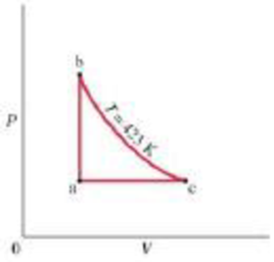
(II) Figure 20–17 is a PV diagram for a reversible

FIGURE 20–17
Problem 6.
Want to see the full answer?
Check out a sample textbook solution
Chapter 20 Solutions
Pearson eText -- Physics for Scientists and Engineers with Modern Physics -- Instant Access (Pearson+)
Additional Science Textbook Solutions
Biology: Life on Earth with Physiology (11th Edition)
Campbell Biology (11th Edition)
Applications and Investigations in Earth Science (9th Edition)
Human Physiology: An Integrated Approach (8th Edition)
Anatomy & Physiology (6th Edition)
Microbiology with Diseases by Body System (5th Edition)
- Help me make a visualize experimental setup using a word document. For the theory below.arrow_forwardHow to solve this, given answerarrow_forwardThree point-like charges are placed at the corners of a square as shown in the figure, 28.0 cm on each side. Find the minimum amount of work required by an external force to move the charge q1 to infinity. Let q1=-2.10 μC, q2=+2.40 μС, q3=+3.60 μC.arrow_forward
- A point charge of -4.00 nC is at the origin, and a second point charge of 6.00 nC is on the x axis at x= 0.820 mm . Find the magnitude and direction of the electric field at each of the following points on the x axis. x2 = 19.0 cmarrow_forwardFour point-like charges are placed as shown in the figure, three of them are at the corners and one at the center of a square, 36.0 cm on each side. What is the electric potential at the empty corner? Let q1=q3=+26.0 µС, q2=-28.0 μC, and q4=-48.0μc Varrow_forwardPLS HELparrow_forward

 Principles of Physics: A Calculus-Based TextPhysicsISBN:9781133104261Author:Raymond A. Serway, John W. JewettPublisher:Cengage Learning
Principles of Physics: A Calculus-Based TextPhysicsISBN:9781133104261Author:Raymond A. Serway, John W. JewettPublisher:Cengage Learning College PhysicsPhysicsISBN:9781305952300Author:Raymond A. Serway, Chris VuillePublisher:Cengage Learning
College PhysicsPhysicsISBN:9781305952300Author:Raymond A. Serway, Chris VuillePublisher:Cengage Learning College PhysicsPhysicsISBN:9781285737027Author:Raymond A. Serway, Chris VuillePublisher:Cengage Learning
College PhysicsPhysicsISBN:9781285737027Author:Raymond A. Serway, Chris VuillePublisher:Cengage Learning Physics for Scientists and Engineers, Technology ...PhysicsISBN:9781305116399Author:Raymond A. Serway, John W. JewettPublisher:Cengage Learning
Physics for Scientists and Engineers, Technology ...PhysicsISBN:9781305116399Author:Raymond A. Serway, John W. JewettPublisher:Cengage Learning Physics for Scientists and Engineers: Foundations...PhysicsISBN:9781133939146Author:Katz, Debora M.Publisher:Cengage Learning
Physics for Scientists and Engineers: Foundations...PhysicsISBN:9781133939146Author:Katz, Debora M.Publisher:Cengage Learning





